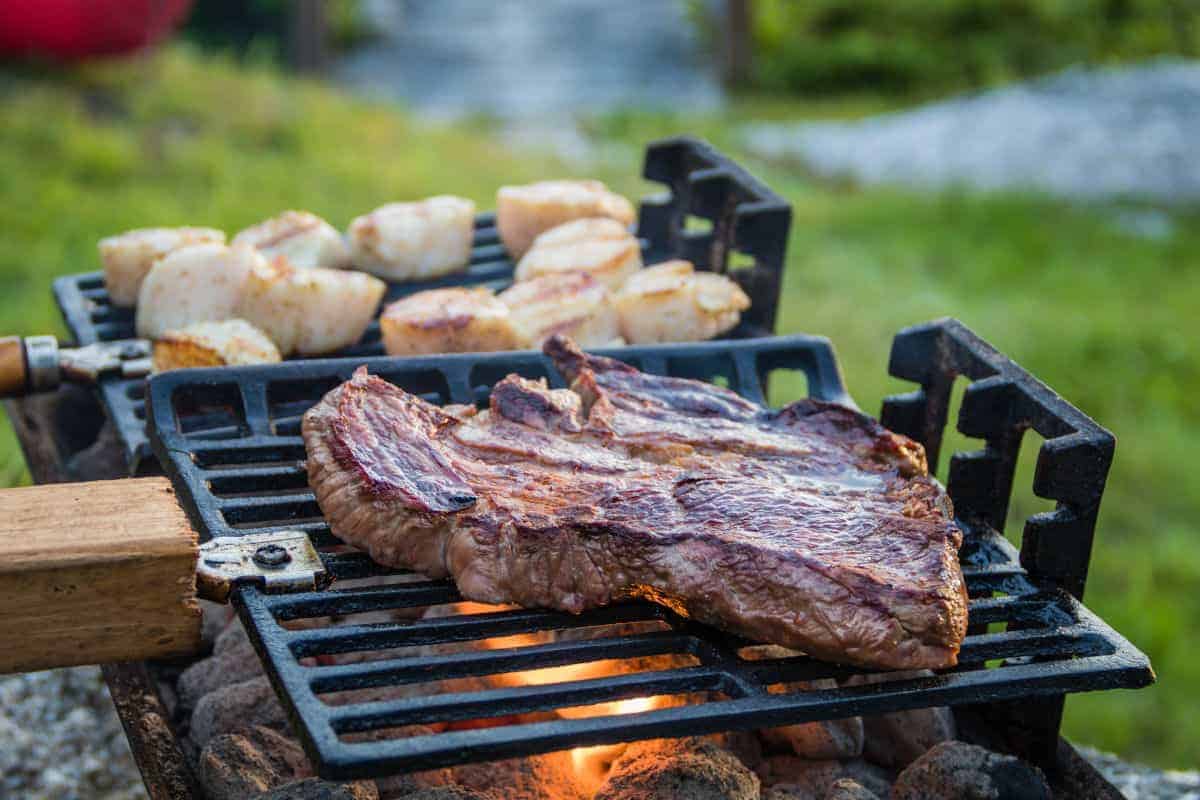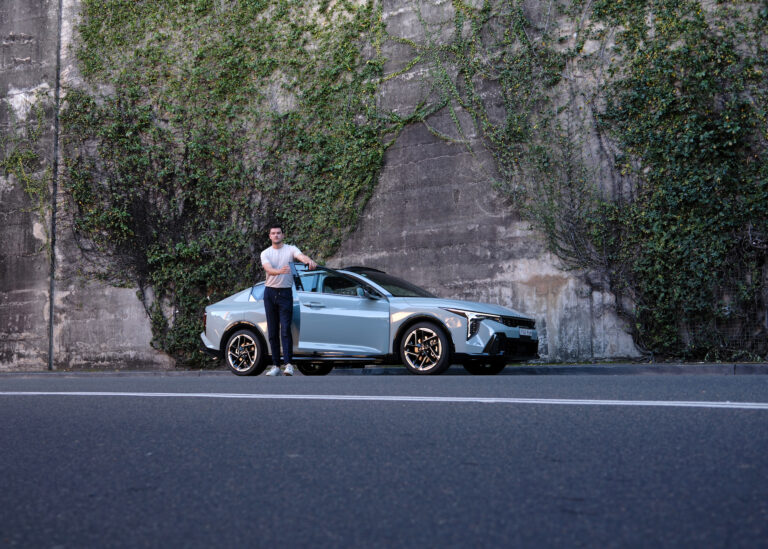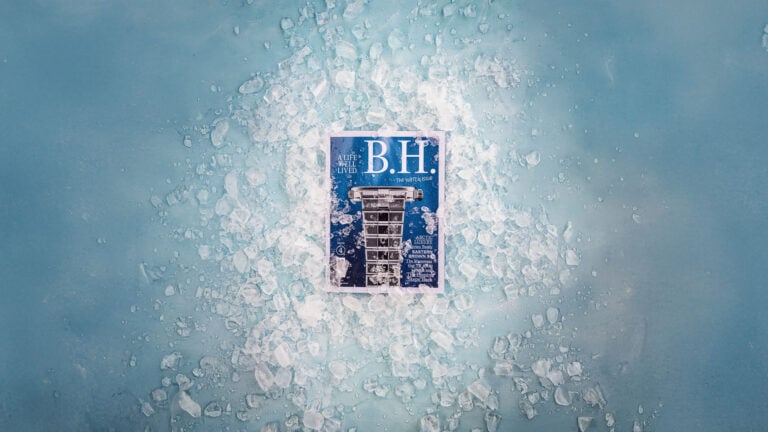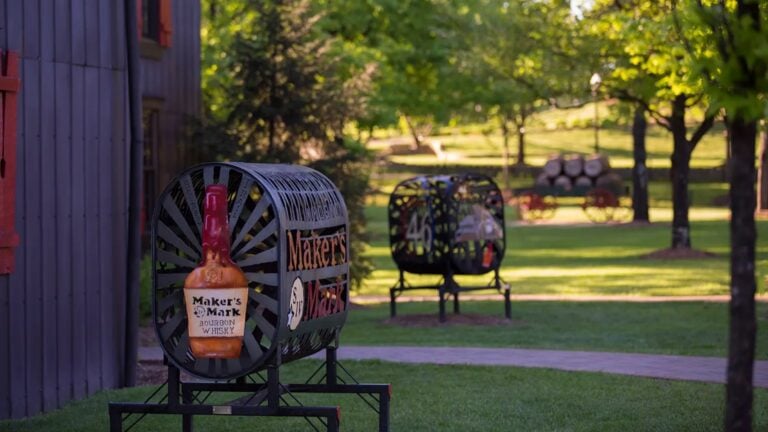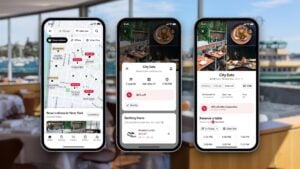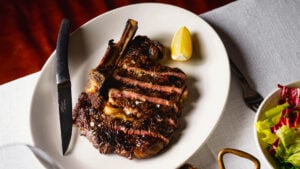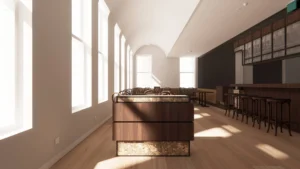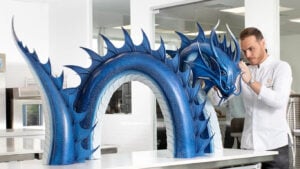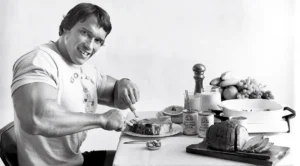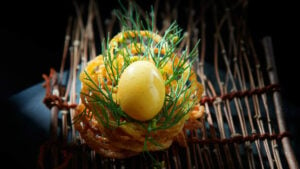Cooking over charcoal with a good hibachi grill has seen a massive uptick in popularity over the past few years, but you don’t have to be a studious Japanese chef commanding an entire kitchen to take advantage of this traditional way of grilling up meats and vegetables.
When that juice drips off your food, splashes onto the firey charcoal and then turns into flavoured smoke, it does something to your food that no other method of cooking can.
This is why looking for the best Hibachi grill to buy is crucial if you want to expand your set of skills in the kitchen or on your next camping trip with the lads.
A good Hibachi grill is super portable and easy to use (although safety measures are required – you are playing with fire after all), with a traditional design based on the Japanese technique that was born many centuries ago.
Best Hibachi Grills In Australia – Table Of Contents
Best Hibachi Grill Options In Australia
1. Jumbuck ‘Rondo’ Small Charcoal Spit Roaster
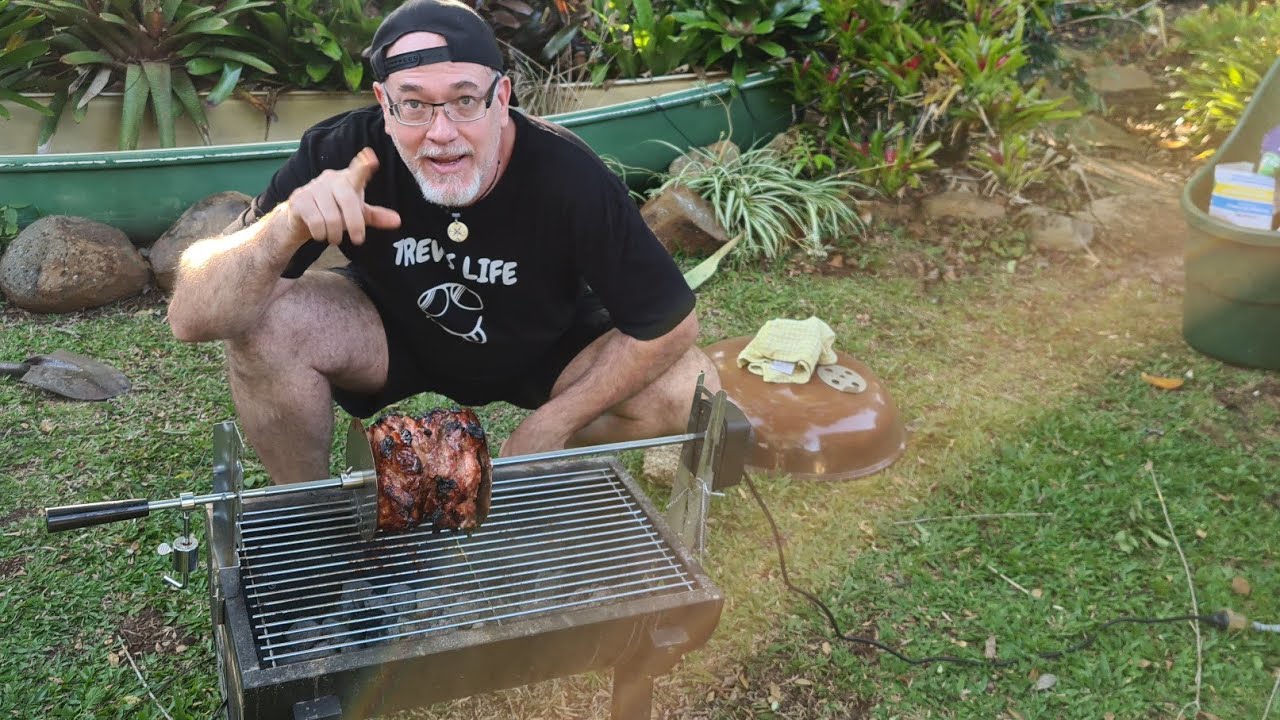
Specifications
- Material: Alloy steel
- Fuel type: Charcoal
- 465-square-inch cooking area
- 240V rotisserie shaft
- Adjustable side ventilation
- Height: 625 mm
- Width: 420 mm
- Depth: 890 mm
- Weight: 11 kg
The Jumbuck Mini Spit is only $85, is available in Bunnings, and has become so ridiculously popular during the pandemic that the device has its own cultish Facebook group – the “Bunnings $85 Jumbuck Mini Spit Society.” At the time of writing, the group has just under 70,000 users who all share Hibachi grill recipes or post photos of the same grill over and over again upon delivery.
It’s an attractive piece of kit, looking like the crosssection of a small drum propped up on legs with its own electric rotisserie for grilling food. With adjustable side ventilation, it’s easier to control the heat here and dial in the kind of temperature you need for different food, which sits across 465-square-inches of cooking area.
The biggest benefit here is the 240V powered rotisserie shaft which rotates food for even cooking, just in case you don’t feel like handling it all yourself. Although, it would be much better if it was stainless steel. Instead, the skewers and prongs are made of chrome, which can degrade over time. But hey, you have to compromise somewhere if you want an affordable hibachi grill.
- Generous cooking area
- Height adjustable rotesserie shaft included
- Very affordable
- Accessories can degrade over time
2. Everdure by Heston Blumenthal Cube
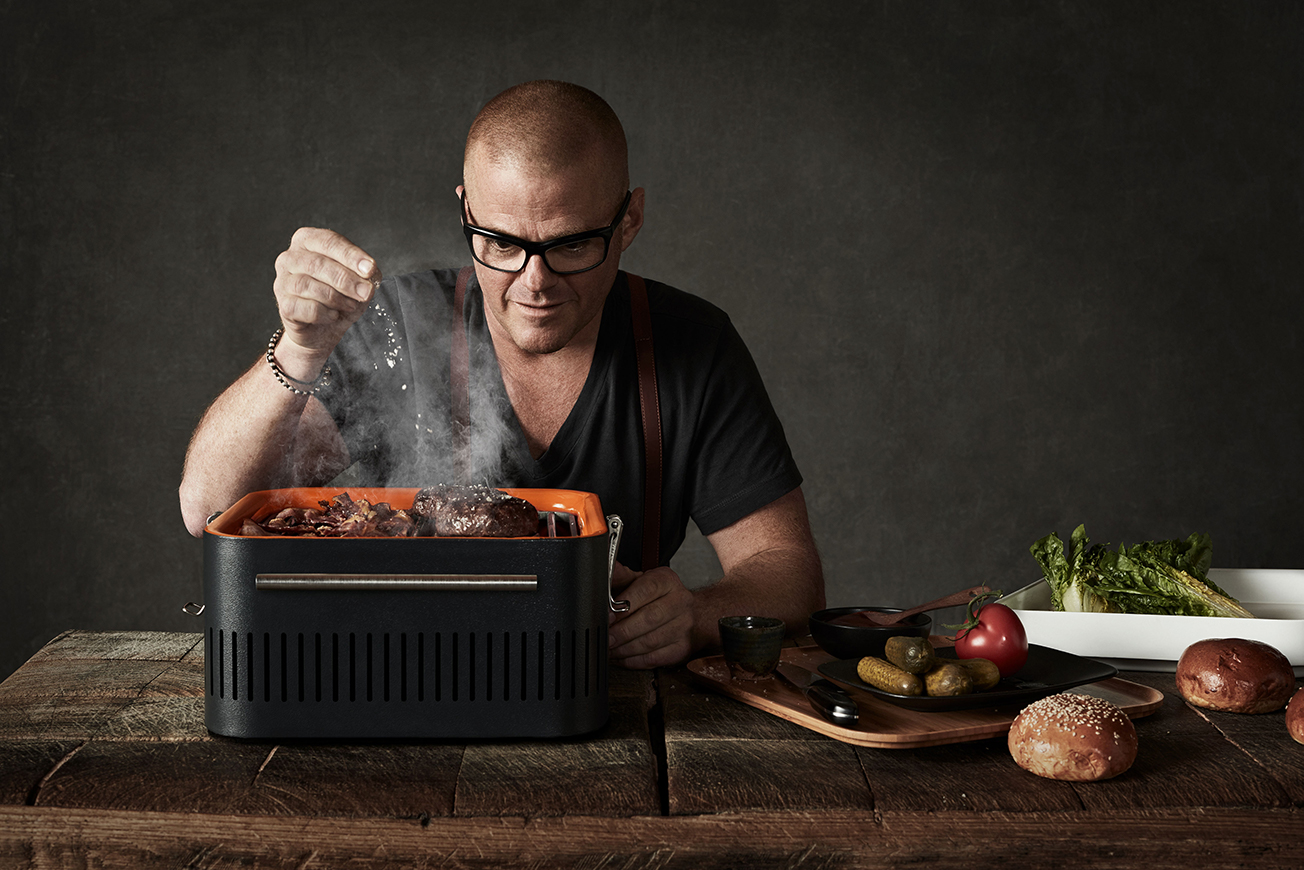
Specifications
- Material: Steel
- Fuel type: Charcoal
- Height: 230 mm
- Width: 425 mm
- Depth: 347 mm
- Weight: 8.1 kg
Everdure by Heston Blumenthal presents the Cube, which has become one of the most popular Hibachi-style grills on the market with its sturdy steel body that still retains a very lightweight and highly portable format.
The base plaque is integrated with this device so you can set the grill on any surface and have access to a food storage tray and a bamboo preparation board. It’s about as far from a traditional Hibachi as you could get, but rather a contemporary take that has redefined the market for portable charcoal BBQ.
- Great reviews
- Strong steel body
- Lightweight
- Accessible food storage tray
- Includes bamboo preperation board
- Preheating can be slow
3. Okunoto Konro Hibachi
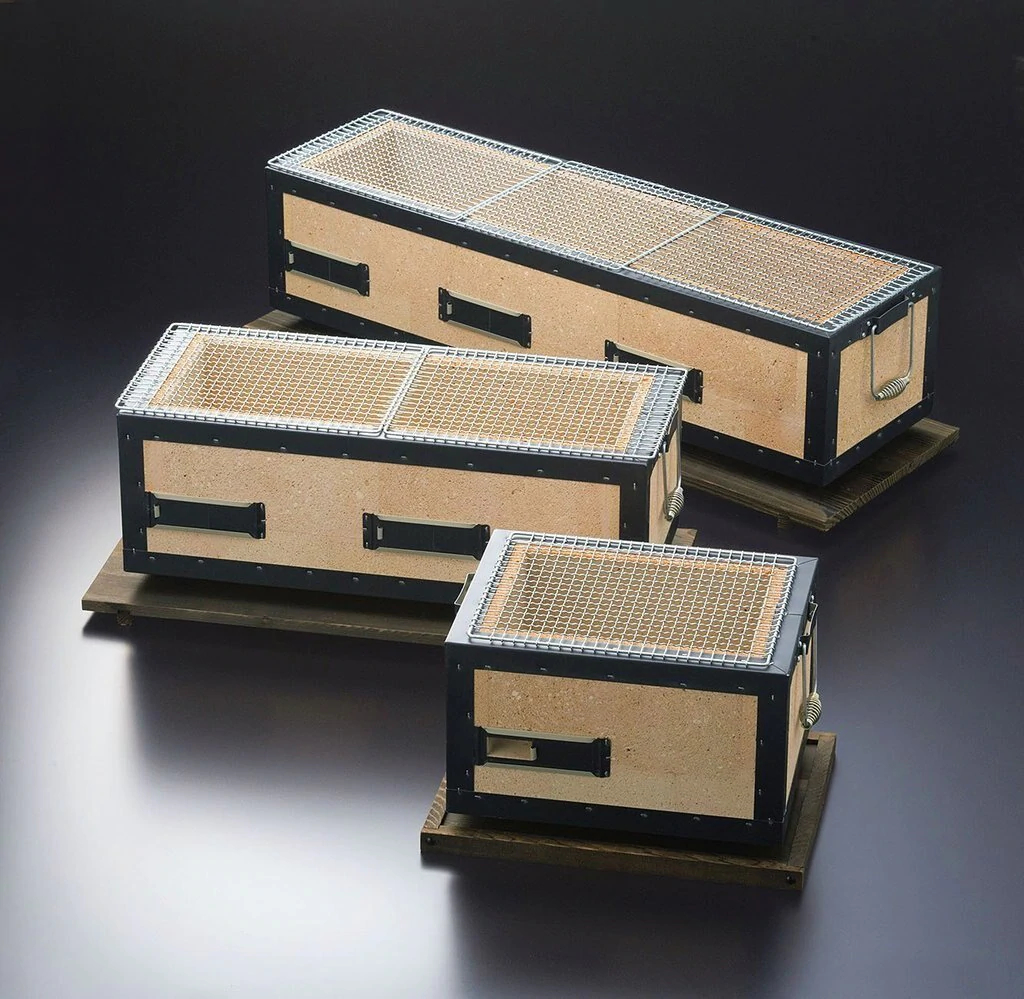
Specifications
- Material: Diatomite
- Comes in three sizes
- Fuel Type: Charcoal
- Uses heat-retaining bricks
- Height: 210 mm
- Width: 230 mm
- Depth: 540 mm
- Weight: 11 kg
The Okunoto Konro Hibachi comes in three distinct sizes – regular, medium and large – and is one of the best-designed charcoal grills you can buy. As above, a Konro is only slightly different from a traditional Hibachi, using heat-retaining bricks to better control and retain heat for more even, consistent cooking.
Given the large, commercial-size Konro is still just a little over $600, it’s a worthwhile investment if you’re going to be cooking with charcoal often.
4. Japanese Korean Ceramic Hibachi BBQ Table Grill Round
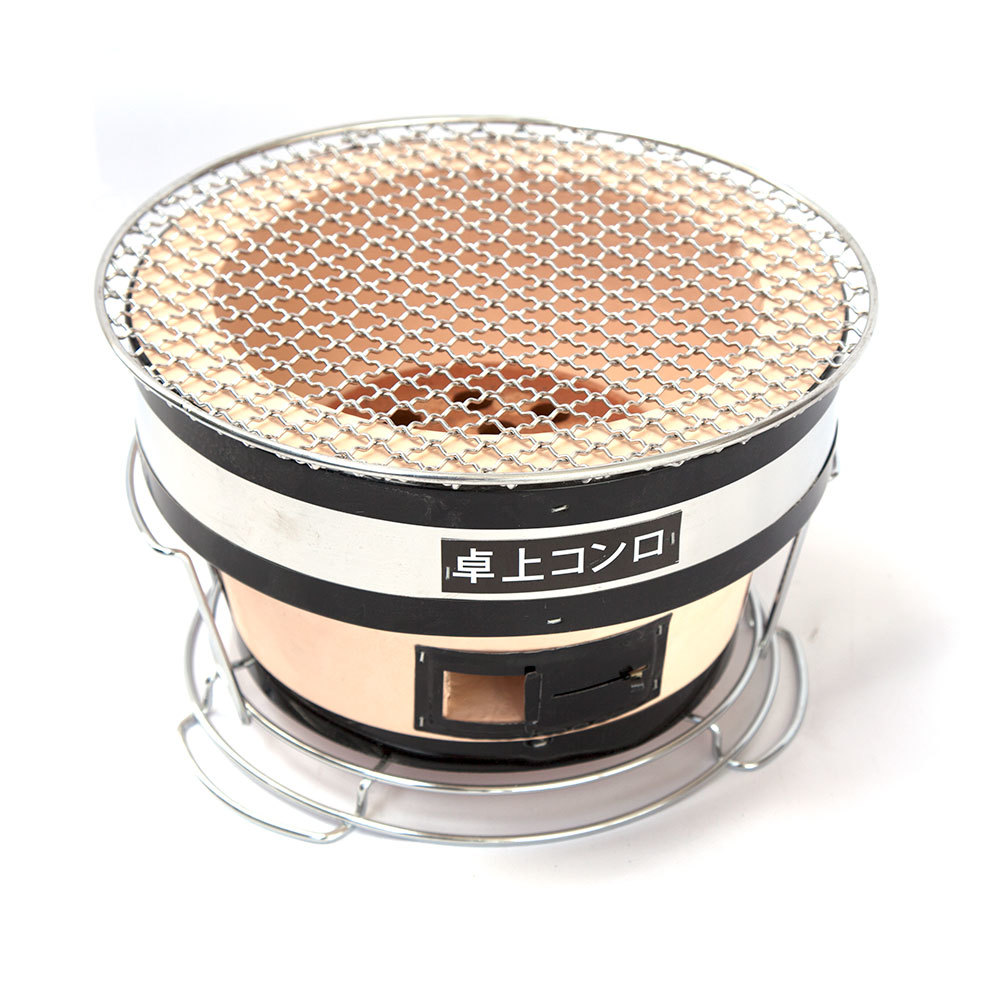
Specifications
- Material: Diatomaceous, clay
- Fuel Type: Charcoal
- Circular design to retain heat
- Stainless steel cooking grate
- Bottom air vent
- Height: 180 mm
- Depth: 280 mm
- Weight: 12 kg
The Japanese Korean Ceramic Hibachi is another Konro-style charcoal grill made with diatomaceous earth. Considering the ceramic clay body, this portable hibachi holds onto heat very well and distributes it a bit more evenly thanks to the circular design that’s topped by a stainless steel cooking grate. The hibachi also has an air vent down the bottom and a stand that elevates it off the table or ground to minimise heat transfer.
- Circular design helps distribute heat evenly
- Sturdy cooking grate won’t rust over time
- Very affordable
- Perfect for picnics
- Preheating can be slow
5. Hinomaru Collection Shichirin Konro
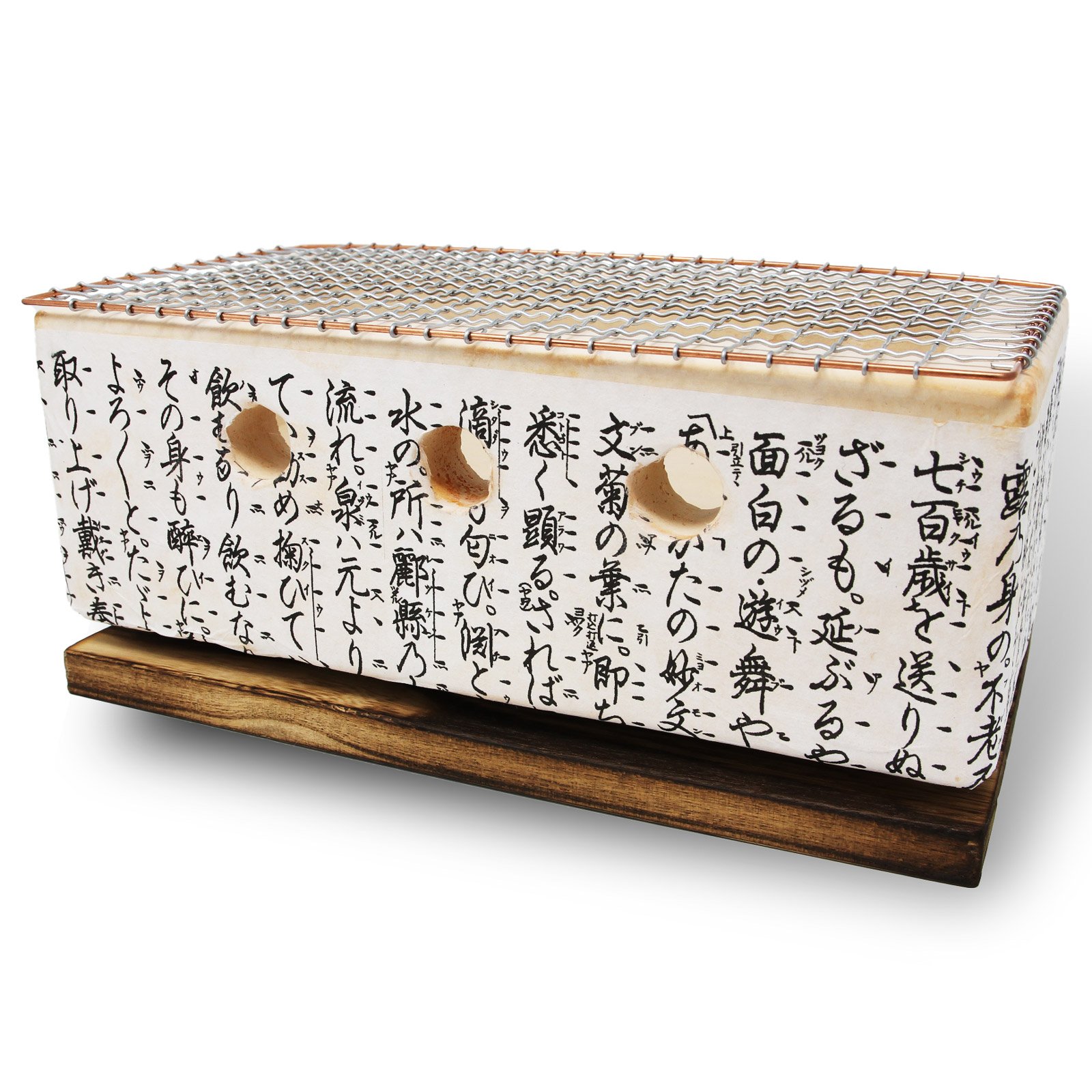
Specifications
- Material: Ceramic
- Fuel Type: Charcoal
- Wooden base
- Wire mesh grill
- Height: Not specified
- Width: 150 mm
- Depth: 248 mm
- Weight: 3.05 kg
Easily the most attractive Hibachi grill on this list. The Hinomaru Collection Shuchirin Konro gives a nice little nod to its tradition with Japanese characters painted on the exterior and ceramic walls on the side with a wire mesh grate.
- Very easy to clean
- Highly portable design
- Wooden base protects surfaces
- Looks great
- Preheating can be slow
6. Proqube
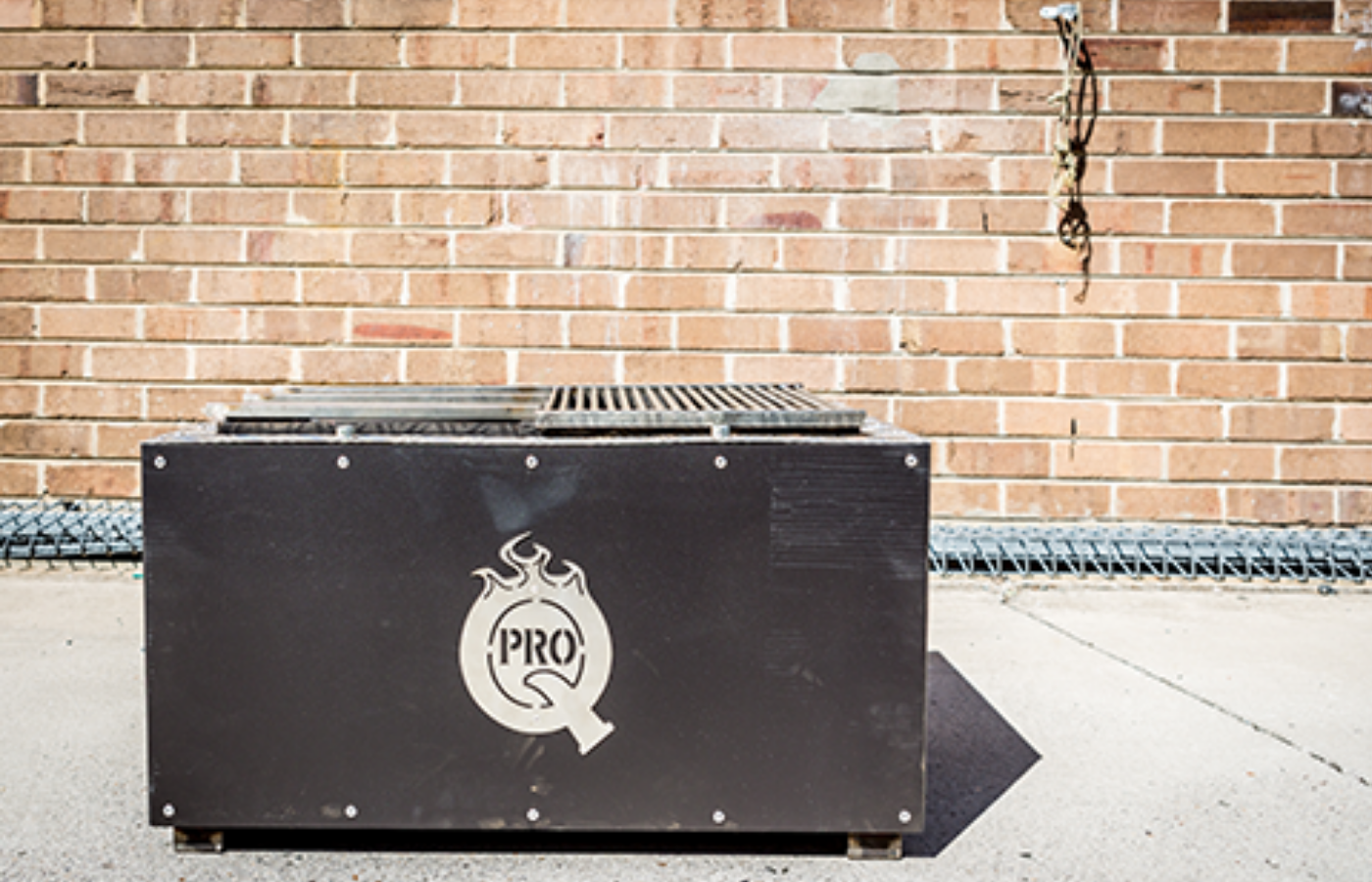
Specifications
- Material: Not specified
- Fuel Type: Charcoal
- Comes in three different sizes
- Modular design
- Smallest can handle six skewers at once
- Dimensions vary based on built
The ProQube is one of the top picks if you’re looking for a modern Hibachi grill with a very effective design and a modular build that’s easy to carry around.
Available in three different sizes, the popular yakitori grill is likely going to be the most reliable as it comes from a dedicated brand with its own customer service. Not that you’d need it much, but that would make any servicing much easier than if you just bought a Hibachi that isn’t part of any particular brand.
The ProQube 1, the entry-level and smallest yakitori grill, has enough capacity to handle six skewers at once while the higher-end ProQube 3 can hold 18 at once for an output of 135 skewers per hour (135 sph).
- Made to order
- Most expensive option can handle 18 skewers at once
- Not as attractive as some alternatives
What Is A Hibachi Grill?

Just like a BBQ smoker and grill, a hibachi grill is another device designed carefully to heat food in a very specific way. Based on traditional Japanese design, the technique was born sometime around the 8th Century and was named such because hibachi translates to “fire bowl” in English.
Most people confuse cooking on a hibachi grill with another renowned Japanese cuisine based on heating – Teppanyaki. Except hibachi and teppanyaki are slightly different. While the latter uses an iron griddle with a flat solid surface to cook food, a hibachi grill involves any design which fundamentally cooks food on a hot, typically round surface that sits atop a wooden or ceramic bowl that’s filled with burning charcoal.
In other words, a teppanyaki grill relies on a heated flat surface to cook the food, while with a hibachi grill the cooking is primarily done by the heat of the charcoal itself. There are pros and cons to either method. A teppanyaki grill will generally be able to cook thicker food like steaks and fish, whereas a hibachi grill is more appropriate when you want to impart a nice smoky flavour into quick-cooking foods like yakitori, tofu, chicken and hamburgers.
Further differences are found in the design. A teppanyaki grill will typically cook food in its own juices to retain richness, while with a hibachi grill the juices will drip onto the coals and get evaporated for that aforementioned smoked flavour.
Think of a hibachi grill as a small charcoal grill that is highly portable so ideal for smaller kitchens in apartments, backyard cooking with mates or camping trips. The shallow style grill means food cooks closer to the heat source so everything cooks quicker without compromising on natural taste.
When you want a smokey cooking technique without investing in a more expensive smoker, deciding on the best hibachi grills and taking the dive is the uncomplicated, pragmatic way to go about lifting your cooking game. If you’re in the market for a Japanese hibachi grill then you’ve got a few decisions to make.
So how much does a Hibachi Grill cost? Fortunately, despite how versatile and game-changing they can be, you won’t be finding many hibachi grills that cost any more than $200. Most of the suggestions you’ll find below cost even less than that.
Benefits Of A Hibachi Grill (And Some Limitations)

A great Japanese hibachi grill is a throwback to ancient times. There’s no lid. Just simply a greater sitting over some burning charcoal, using the heat and smoke to quickly cook food. It’s a vessel to hold and concentrate the fire, with vents to control airflow and cook evenly. Nothing more.
There are numerous benefits to owning a hibachi grill. And while there are limitations as well, the pros definitely outweigh the cons here.
1. Pro: Hibachi Grills Have A Small Footprint
You’re never going to need to carve out much space in your kitchen or backyard to introduce a Japanese hibachi grill. This makes them ideal for people with limited space outdoors and a great, portable alternative if the best BBQ smokers and grills aren’t doing it for you.
2. Pro: Hibachi Grills Are Very Portable
Because you’ve got such a small footprint with a Japanese hibachi grill they, like the best portable pizza ovens, can be moved around with ease. As mentioned above, you can take them to picnics, camps or parties with little worry. The only thing that’ll affect this is the type of hibachi grill you decide to buy. Some are heavier than others because of the material used.
3. Pro: Hibachi Grills Are Affordable
Unlike smokers and
And assuming you’ve already got a smoker, it’s worth setting up the hibachi grill so your mates can grill some yakitori or skewers while you’ve got the bigger pieces of meat sitting in the smoker.
4. Con: Limited Use
As mentioned above, there are some limitations to using a hibachi grill, and this is probably the most important of them all. Given the design and size, hibachi grills are only suitable for small, thin and quick-cooking foods that can be directly grilled. There’s no indirect grilling or smoking here because it’s an open-air design – no traditional hibachi grill comes with a cover or lid.
5. Con: Harder To Control Heat
Because you’re relying on heat from charcoal sitting in a bowl beneath the food, heat control can be challenging. While more modern hibachi grills address this issue with different materials like cast iron and separate vents, some of the lower-priced hibachi grills make it harder to control how your food cooks.
6. Con: No Lid
Hibachi grills are defined by the open air. You won’t find one with a lid, and hence if you like smoking your food for an extended period of time you’ll be left disappointed. You can always use some aluminium foil to try and help capture some of that heat, but if you’re looking for the evenness afforded by a lid then you’d need to think about getting a more expensive bbq grill or dedicated smoker.
Types Of Hibachi Grills

If you’re looking for the best hibachi grills to buy, then you’ll come across just three types marketed as hibachi grills. First, you’ve got the traditional charcoal hibachi grill, where you’ll typically have a cast-iron grate or aluminium grate over a base. Next, a gas griddle is better suited for outdoor kitchens with cast aluminium or stainless steel using propane gas as a heating source. Lastly, there’s the teppanyaki grill, which as detailed above is meaningfully different from a hibachi grill – yet that doesn’t stop them from being marketed interchangeably.
The only common thing between these three types of hibachi is the lack of a top lid.
- Charcoal hibachi grill – Generally small and portable, this type usually places a cast-iron grate over a base of charcoal. Cheaper versions employ cast aluminium (in lieu of clay, cast-iron, ceramic, or rare materials like diatomite), which doesn’t deliver the same tier of character or quality. Some, but not all, include bottom vents for additional heat control. Most are large enough to allow for two-level charcoal fires.
- Gas griddle – Popular in outdoor kitchens, this type generally employs materials like cast aluminium or stainless steel. It uses propane gas as a heating source and bears a stronger resemblance to your standard barbecue or griddle. While not traditional, it is convenient. Just don’t expect to get any of that smoky charcoal flavour.
- Teppanyaki grills – This is a freestanding type of flat-surface bbq and it’s more or less become part of the hibachi family, if only for the sake of marketing. Most often, it uses propane gas as a heating source and features a cast-iron surface.
- Japanese Konro Grill – Much like a teppanyaki grill, the Japanese Konro grill is different to a hibachi and yet often is thrown into the same category. Konro grills might be a bit harder to find and slightly more expensive as they are made with a special insulating material that helps reflect heat back into the grill, resulting in temperatures that are more consistent than those with the simple charcoal grill of a hibachi. This is despite the cooking area being roughly the same size. You won’t find as many of these in Australia as you would hibachi.
What Can You Cook On A Hibachi Grill?

As mentioned above, a hibachi grill will only be of use when you’re needing to impart a smokey flavour to quick-cooking foods. As such, most people use their hibachi grill for cooking yakitori and skewers, sates, kebabs, small to medium-sized chicken breasts, thin fish fillets or thin steaks, sliced vegetables like mushrooms and long beans, hamburgers, hotdogs, tofu, halloumi and fruits like grilled pineapple.
This is great for when you need to quickly grill something in accordance with your favourite recipes so even if you’re buying it as a gift, it’s always worth doing a little shop online to see what kind of special offers are going around for a hibachi grill.
Due to how close the food is to the heat source, everything cooks rather fast so you’d ideally only need to flip once and cook for no longer than a few minutes. Think of it like that grill you’d find at some of the best Korean BBQ restaurants in Sydney, Melbourne or Brisbane.
Because a hibachi grill uses charcoal you can expect high heat. Most chefs seem to agree that the ideal temperature for a hibachi grill is 232°C in the centre and about 121°C on the sides. You’ll need to take note of that if you want to cook your food evenly. Given there’s no lid to trap the heat, you have to actually monitor the food and make sure all parts are cooked.
Whether it’s for a backyard cookout or an easy grilling after work in the kitchen, as long as you’re cooking the right food on it, there’s not much downside to owning a hibachi grill.
And it’s not something you’d need any complicated recipes for either, but that doesn’t mean there aren’t specific hibachi grill recipes out there. There are plenty of cooking blogs that you can sign up for email updates to that will regularly keep you updated with ways to use the hibachi.
What To Look For In A Hibachi Grill
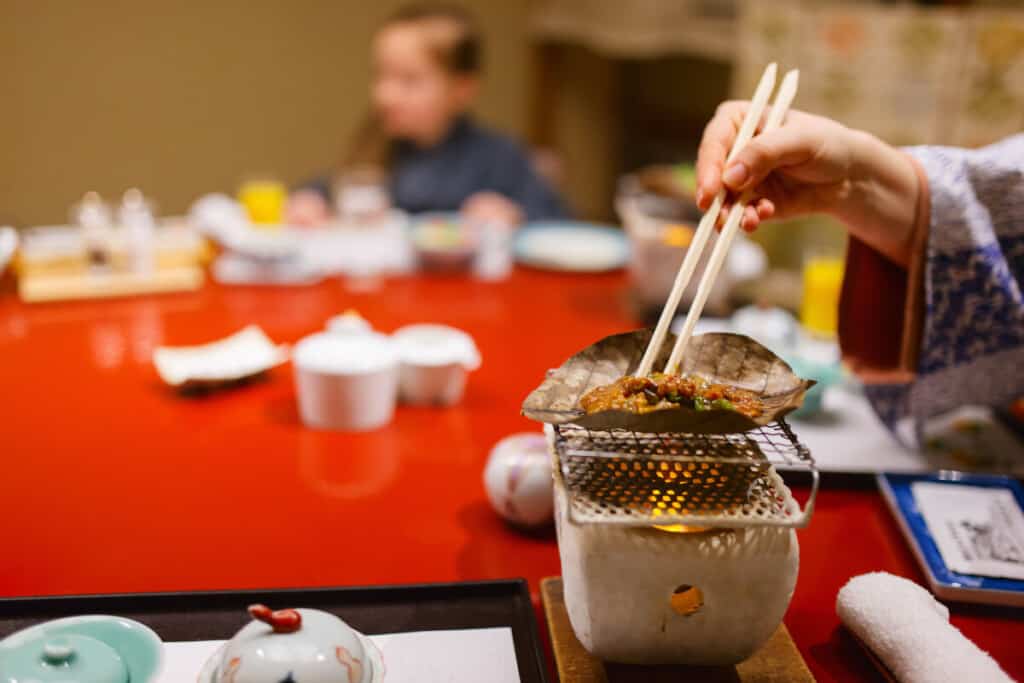
1. Size & Shape
Different brands of hibachi grills will have differently shaped chambers and varying sizes of grates. Some grates that are too wide aren’t ideal as most of the heat will be concentrated in the centre, depending on how the charcoal is distributed below. You want to cook food in the centre as this is typically where you’ll get the most heat.
The counterpoint to this is that a wide grate will obviously yield much more and allow you to cook multiple foods at once. A smaller grate will be more portable and the heating will be more concentrated, but you’ll only be able to cook a few things at a time. There’s also less risk of the food falling onto the coals when you’ve got a smaller, tighter grate.
2. Design
You’ll ideally want a modern hibachi grill that has vents located at the bottom of the chamber to better help with flame regulation. Some of the grills are even big enough to have separate heating zones so you can better control the amount of heat needed for different types of food.
And some hibachi grills even come with some height adjustments so you can control how close the food is to the heat source, again giving you more say over how your food cooks and allowing you more options.
3. Material
The most important thing to consider when buying a hibachi grill is the material used. This greatly determines how effective your grilling will be. The most expensive models will use a cast iron grill to withstand heat, last longer and better capture the flames so your food cooks through. The heat level doesn’t fluctuate as much with cast iron as it does with an aluminium grill, so there’s more consistency.
The downside to the more durable cast iron is that it’s much, much heavier than aluminium. So material matters when you’re thinking about portability, and for this, you’ll need to decide where you’ll be using your hibachi grill the most.
If you’re going to be mostly using your hibachi grill for camping and backyard cookouts, then go aluminium. It’s so much easier to carry around.
On the flip side, cast iron is the most ideal for performance so if you’re mostly going to be keeping your hibachi grill indoors or occasionally taking it into your backyard, go for cast iron.
The other consideration in terms of material is the handles for the hibachi grill. They will either be wooden or metallic. Obviously wooden handles are a bit safer as they don’t get as hot, so think about how often you’ll be picking up the hibachi grill while it’s doing its thing.
4. Gas VS Charcoal
One of the most important things to consider with a hibachi grill is whether you want the more traditional charcoal hibachi grills, which afford the best flavour, or a gas grill, which is more convenient and easier to use. If we had to pick, we’d say go with charcoal. As long as you’re fine with putting in a little more effort to distribute, lighting and monitor the coals, then you’ll get a much better flavour from any food cooked on the hibachi grill.
Cooking with charcoal is also just much more satisfying so it’s likely your favourite Japanese restaurant has decided to purchase a cast iron grill for the kitchen’s hibachi.
You also need to consider what kind of charcoal you’ll be using and how much. You never want to overload the grill with an abundance of white smoke that will leave a more bitter taste on your food. You only want a slightly blue, faint smoke from something like mallee wood or more delicate Binchotan charcoal.
Note that a lot of chefs use gas to light their charcoal and then transfer it in an ovenproof dish to the actual hibachi grill. Considering Japanese Binchotan can be a bit more difficult to light than most other types of charcoal, you may want to keep that technique in mind.
5. Portability
One of the most attractive things about owning a hibachi grill is just how portable the thing is. You can take this out camping just as easily as you can plonk it in the kitchen and grill up some skewers after work. As such, you need to decide on how you’re going to be using your hibachi grill. After that, every other decision – cast iron vs aluminium, gas vs charcoal, shape and size – should be much easier.
Why Are Hibachi Grills Popular?

After appearing on MasterChef Australia back in 2020, sales for hibachi grills reportedly surged over 1,600% during the pandemic. Stores across Australia were struggling to keep up with demand and charcoal grills quickly replaced the demand for hooded bbq grills.
There are a few reasons for this. Of course, there’s the fact that MasterChef Australia remains one of the most influential reality shows in the country. But then there’s also the theatre of whipping out a hibachi grill at a picnic and heating up some skewers. It’s fun. Cooking with charcoal is fun. Whether that means grilling up some sausages over charcoal along the beach or smoking up some satay at a house party.
Frequently Asked Questions
What is a hibachi grill?
Generally, a hibachi grill is a portable charcoal grill based on traditional Japanese cooking techniques, allowing you to cook thin meats and vegetables over burning hot charcoal for a very natural smoked taste.
Is a hibachi grill worth it?
Considering some of the best hibachi grill options are very affordable, it’s well worth the purchase considering it’s a great addition to your cooking repertoire and can quickly cook up meats with a natural smoked flavour.
What can you cook on a hibachi grill?
A hibachi grill is best used for cooking thin meats and vegetables where the juice drips down onto the charcoal and is then turned into steam, flavouring the food quickly.
What is the best hibachi grill to buy?
The best hibachi grill you can buy is either the Cube from Everdure by Heston Blumenthal or the very well-designed and simple Okunoto Konro Hibachi.
